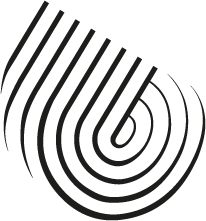When writing about Eigg, the lure of words like ‘magical’, ‘dream-like’ and ‘fairytale-esque’ is difficult to resist. By the end of my week there, my refrain became that I was sick of rainbows. Sick of them! Everywhere I looked I was confronted with another glorious technicolour arch: over my shoulder, out of the window, in the reflection of a teapot, in the bottom of my hiking boot. If I reached into my pocket for a cigarette, I would probably pull out a rainbow.
Baltic Bothy Residency 2018 – Julia Heslop
An Island Estate. I’ve been interested in the Isle of Eigg for many years, since reading Alastair Mackintosh’s brilliant book Soil and Soul in which he traces the community buyout of the island over twenty years ago. My work has always been about land (although it’s taken me a while to realise that). From making paintings at the Glasgow School of Art about gentrification, to building a prototype home with a group of homeless people in Newcastle, I realise now that land is the common denominator. Ownership of land brings control and self, as well as collective, determination. Yet land is also place – it is a facet of identity.
ANDREA CHRISTODOULIDES: Lyon and Turnbull Residency, 2017
Big changes, rock faces, big women and singing sands
JENNY BROWNRIGG: Research Residency, 2016
Photographs of Eigg from the 1920s & 1930s: MEM Donaldson and Violet Banks. My ongoing research is writing about the early women film-makers and photographers who were documenting Scottish Highlands & Islands life in the 1920s’ and 30s’. A visit last year to Mary Ethel Muir Donaldson’s photographic collection at Inverness Museum and Art Gallery archives showed that she had made a series on Eigg. Her photographs illustrated her travel guide ‘Wanderings in the Western Highlands and Islands‘ (1921). Whilst I had been able to spend time in the places that other photographers or film-makers had lived, such as Jenny Gilbertson (1902-1990) on Shetland, and Margaret Fay Shaw (1903-2004), who stayed on South Uist and Canna, I had not yet been able to travel to experience any of the key locations that Donaldson (1876-1958) had photographed. The weeklong residency on Isle of Eigg gave me the invaluable opportunity to pinpoint then visit the locations in the photographs, taken 1918-1936. The week also allowed the chance to find out more about a second Scottish photographer, Violet Banks [1] and her photographs of Eigg from her tour of the Western Hebrides c. 1920s & 30s’.
RYAN ARTHURS: Self-Directed Residency, 2016
Strata. "The island is pervaded by a subtle spiritual atmosphere./ It is as strange to the mind as it is to the eye. / Old songs and traditions are the spiritual analogues / of old castles and burying-places and old songs / and traditions you have in abundance. / There is a smell of the sea in the/ material air / and there is a ghostly something in the air of the imagination… / You breathe again the air of old story-books." -Alexander Smith, 'A Summer in Skye', 1885
KADDY BENYON: Self-Directed Residency, 2016
Island of the Big Women. It started with a painting in the garden office of the woman I admire the most. Each time I visit her, a rainbow-lit candle glows from above her desk and flickers at the edge of vision. It is impossible to ignore the vitality, the hope, the almost musical use of colour in the painting.
FERGUS WALKER: Inches Carr Residency, 2016 (Made Draft, March, 2020)
HANNAH IMLACH: RSA Residencies for Scotland, 2016
Nautilus Turbine. My first visit to Eigg was not as an artist, but as a tourist. Like thousands every year, I came to explore the island, enjoy its scenery and go for long walks. However, the landscape was not the only thing to leave a lasting impression on me during that trip as I began to learn more about the island’s community-run renewable energy scheme. I went on to read Alastair McIntosh’s Soil and Soul, so was aware of the long and arduous process that led to Eigg’s community buy-out in 1997, and the autonomy this had brought the islanders. The more I learnt of the modest wind turbines and hydroelectric apparatus that inconspicuously sit in the landscape, the more I understood that the Isle of Eigg is a microcosm, representing many of the things that inspire and motivate my art practice.
RACHEL HUNT: Self-Directed Residency, 2016
Using Sweeney’s as a place to explore the ‘out-dwelling’ skillscape. My trip to Sweeney’s was well timed, unintentionally so. It came in the midst of my write up, during a particularly fraught couple of months, when a years worth of empirics was being turned into just five chapters of a thesis. I am studying huts and bothies in rural Scotland and have found that, as Nan Shepherd wrote, ‘The thing to be known grows with the knowing’. Even in a thesis there is never enough room. I was stressed and frazzled and it was a wet, wet winter. Sweeney's offered welcome escape.
CORIN SWORN: Outset Scotland 2016
To elaborate plans for a domestic labor zombie film: Why not? Let’s film it with the head torch on./ We put on full body tents to climb rocks in the rain./ Today might be all about tins and orange lentils and then trout appears at the table. But what do we do with it?
